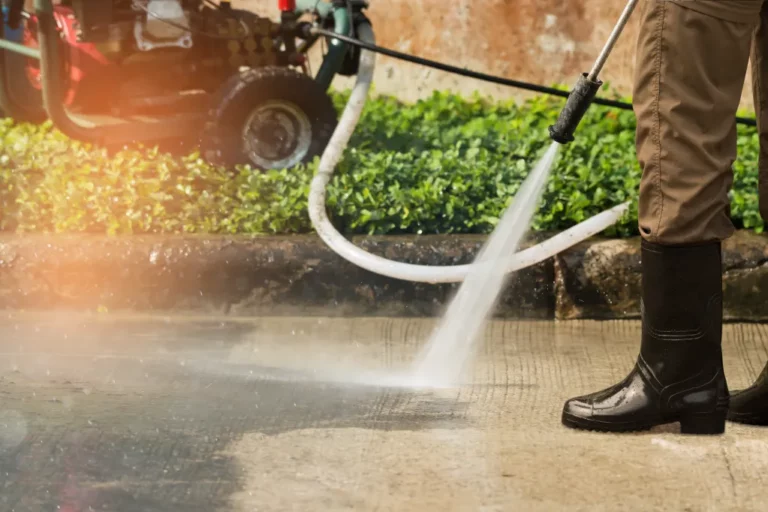
Quick Tips
A pressure washer is one of the most powerful tools in your cleaning arsenal. It blasts away dirt, grime, mold, and grease from patios, driveways, cars, and siding. But over time, residue, mineral buildup, and debris can clog the system, reducing efficiency and potentially damaging the machine. Regular maintenance ensures your pressure washer performs at peak efficiency and lasts for years. Here’s how to properly clean and maintain your pressure washer.
Why Cleaning Your Pressure Washer Matters
A dirty or clogged pressure washer can lead to reduced water pressure, overheating, and mechanical failure. By regularly maintaining your machine, you can:
- Prevent blockages in the hose, nozzle, and pump.
- Extend the lifespan of the pump and motor.
- Avoid unwanted downtime due to malfunction.
- Ensure optimal cleaning power every time you use it.
- Reduce wear and tear on internal components, saving money on repairs.
Many pressure washer owners overlook routine cleaning, thinking these machines are self-maintaining. However, regular maintenance not only enhances performance but also prevents costly breakdowns and ensures the washer is ready for the next cleaning session.
What You’ll Need
- Mild Detergent or Vinegar Solution – Helps break down buildup in hoses and nozzles.
- Garden Hose – To flush out the system.
- Soft Brush or Toothbrush – To clean small components.
- Bucket of Warm Water – For rinsing detachable parts.
- Pressure Washer Pump Protector (Pump Saver) – Lubricates and prevents freezing in cold climates.
- Needle or Small Wire – To clear out clogged nozzles.
- WD-40 or Lubricating Oil – Prevents rust and keeps moving parts in good condition.
- Microfiber Cloth – For wiping down the exterior of the machine.
- Replacement O-Rings and Seals – In case of leaks or worn-out components.
How to Clean a Pressure Washer in 6 Steps
1. Flush Out the System
After every use, remove the detergent siphoning tube and flush the system with clean water. Connect your garden hose and run water through the system for at least one minute to clear out any detergent residue and prevent buildup. If detergent is left to sit, it can harden inside the tubing, leading to clogs and reduced efficiency.
2. Clean the Nozzles
A clogged nozzle can result in uneven spray patterns and reduced pressure. Remove the nozzle from the spray wand and soak it in warm, soapy water for 10–15 minutes. Use a small needle or wire to clear out any debris, then rinse thoroughly before reattaching it. If you notice consistent clogging, consider replacing the nozzle.
3. Inspect and Clean the Hoses
Detach the high-pressure hose and check for blockages. If you notice any obstructions, use a long, flexible wire to clear out debris. Rinse the hose with water and let it dry completely before reattaching it. Inspect the hose for any cracks or leaks—damaged hoses can lead to pressure loss and should be replaced immediately.
4. Maintain the Pump and Water Inlet Filter
Check the water inlet filter for sediment buildup and rinse it under running water. To keep the pump in good condition, apply a pump protector solution after every few uses, especially before storing the washer for an extended period. This prevents corrosion and lubricates internal seals, which is especially important for gas-powered units.
5. Wipe Down the Exterior
Dirt and grime can accumulate on the body of your pressure washer. Use a damp microfiber cloth to wipe down the machine and prevent long-term residue buildup. If you have a gas-powered unit, check for any fuel or oil leaks. Regularly inspecting and cleaning the exterior helps prevent rust and ensures the machine remains in top condition.
6. Store Properly
Proper storage extends the life of your pressure washer. Always store it in a dry place, away from direct sunlight and freezing temperatures. If you live in a cold climate, make sure to winterize your machine by running pump protector through the system to prevent damage from freezing. Disconnect and drain all hoses before storage to prevent any trapped water from freezing and causing cracks.
How to Maintain Your Pressure Washer for Longevity
- Use the Right Detergents – Only use pressure washer-approved cleaning solutions to prevent clogging.
- Check for Leaks Regularly – Inspect hoses and fittings to ensure there are no cracks or leaks.
- Replace Worn-Out Parts – Nozzles, hoses, and seals wear out over time; replace them when necessary.
- Run the Engine Periodically – If using a gas-powered washer, start the engine occasionally to prevent fuel system issues.
- Keep Moving Parts Lubricated – Regularly apply oil or WD-40 to joints, O-rings, and metal components.
- Clean the Detergent Tank After Every Use – Prevents buildup of soap scum that can lead to clogs.
Common Mistakes to Avoid
- Leaving Water in the System – Stagnant water can cause corrosion and mineral buildup.
- Skipping Nozzle Cleaning – A clogged nozzle weakens water pressure and affects performance.
- Ignoring Leaks – Small leaks can turn into big problems if not addressed early.
- Using Harsh Chemicals – Stick to detergents formulated for pressure washers to avoid damaging internal components.
- Over-Tightening Connections – Excessive force on hose fittings and nozzles can lead to stripped threads and damage.
Final Thoughts
Your pressure washer is a workhorse, but even the toughest tools need maintenance. By following these steps, you’ll keep your pressure washer running smoothly, extend its lifespan, and ensure it delivers the power you need for every job. If you’re tackling more deep-cleaning tasks, check out How to Clean a Driveway for more heavy-duty cleaning advice.
Sources Cited
- Best Practices for Pressure Washer Maintenance
- How to Unclog a Pressure Washer Nozzle
- Proper Storage for Pressure Washers